Robert Rauschenberg
Visual Artist | Set, Lighting & Costume Designer, Composer
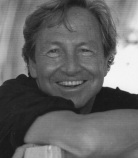
Robert Rauschenberg was born in Port Arthur, TX, and began his formal art education at Black Mountain College, following his discharge from the United States Navy in 1945. In 1949, he moved to New York and in 1951 received his first solo exhibition at the Betty Parsons Gallery. Mr. Rauschenberg's first one-artist exhibition was held in 1963 at the Jewish Museum in New York. He received the Grand Prize for Painting at the Venice Biennale the following year. He has worked in the performing arts since the 1960's as a set, costume, and lighting designer for various dance companies. A mid-career retrospective was mounted in 1976 at the Smithsonian Institution, Washington, DC, when Mr. Rauschenberg was selected to honor the American Bicentennial. Between 1984-1991, he was actively engaged in Rauschenberg Overseas Culture Interchange (ROCI), a tangible expression of his belief in the power of art to bring about social change on an international level, and the culmination of his long-term commitment to human rights. A major retrospective exhibition celebrating his work was offered by the Solomon R. Guggenheim Museum in 1997. Throughout his life Mr. Rauschenberg approached his art with a spirit of invention and with a quest for new materials, technologies, and ideas.
Collaborated Repertory:
Roland Aeschlimann
Set, Lighting & Costume Designer
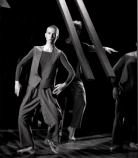
Born in Switzerland, he trained at the Bayreuth Festivals as an assistant to Josef Svoboda. He spent several years as Art Director in Osaka (Japan), was Head Designer at the Grand Théâtre de Genève and enjoyed a long collaboration with Herbert von Karajan. He has designed in venues across the world, including Stuttgart, Frankfurt, Warsaw, Leipzig, Berlin, Dresden, London, Paris, New York, San Francisco etc. His main designs have included "Tristan und Isolde“ (Glyndebourne Opera Festival); "Orfeo“, "Luci mie traditrici“ (Théâtre de la Monnaie, Brussels / Barbican Centre, London); "Giasone“ (Frankfurt Opera). He has designed and directed "Parsifal“ (Grand Théâtre de Genève / Oper Leipzig / Opera de Nice); "La Damnation de Faust“ (Théâtre de la Monnaie, Brussels; "Euryanthe“ (State Opera, Karlsruhe), "Nabucco“ (Grand Théâtre de Genève“. Other productions include "Luisa Miller“ (Royal Opera House London); "Il figlio delle selve", "Der Alte vom Berge“ (Schwetzingen festival / Theater Basel); "Die Meistersinger von Nürnberg“, "Allem nah - allem fern“, "L’Oiseau de feu“ (Zürich Opera); "Daphnis et Chloé“ (Genève and Maggio Musicale, Firenze); "La forza del destino“ (San Francisco Opera); "Euryanthe“, "Mazeppa“ and "Manon Lescaut“ (State Opera, Karlsruhe); "Nabucco“ (Oper Frankfurt); and "Hellhörig“ (creation for the Biennale Munich). Some of his latest productions: "Belshazzar“ (State Opera Berlin / Festival d’Aix-en-Provence / Opera de Toulouse); "Moses und Aron“ (Düsseldorf Opera); "L' Upupa“ (Dresden, State Opera); "Maldoror“ (Prinzregententheater München); "Elektra“ (Grand Théâtre de Genève / Oper Düsseldorf); "Falstaff“ and "Stiffelio“ (National Theater Mannheim) and others. Photo of Another Story as in falling © 1993 Beatriz Schiller
Collaborated Repertory:
Laurie Anderson
Composer
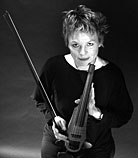
Laurie Anderson is one of America’s most renowned - and daring - creative pioneers. She is best known for her multimedia presentations and innovative use of technology. As writer, director, visual artist and vocalist she has created groundbreaking works that span the worlds of art, theater, and experimental music. Her recording career, launched by O Superman in 1981, includes the soundtrack to her feature film Home of the Brave and Life on a String (2001). Anderson's live shows range from simple spoken word to elaborate multi-media stage performances such as Songs and Stories for Moby Dick (1999). Anderson has published seven books and her visual work has been presented in major museums around the world. In 2002, Anderson was appointed the first artist-in-residence of NASA which culminated in her touring solo performance The End of the Moon. Recent projects include a series of audio-visual installations and a high definition film, Hidden Inside Mountains, created for World Expo 2005 in Aichi, Japan. In 2007 she received the prestigious Dorothy and Lillian Gish Prize for her outstanding contribution to the arts. She completed a two-year worldwide tour of her performance piece, Homeland, which was released on Nonesuch Records in 2010.
Collaborated Repertory:
Robert Ashley
Composer
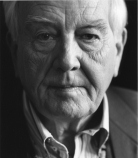
Robert Ashley is known for his work in new forms of opera. In the 1960s, Ashley organized Ann Arbor’s legendary ONCE Festival and directed the ONCE Group. During the 1970s, he directed the Center for Contemporary Music at Mills College, toured with the Sonic Arts Union, and produced and directed Music with Roots in the Aether, a 14-hour television opera/documentary about the work and ideas of seven American composers. Ashley wrote and produced Perfect Lives, an opera for television widely considered the precursor of “music-television.” The stage versions of Perfect Lives, Atalanta (Acts of God) and Now Eleanor’s Idea toured throughout Europe, Asia, and the United States. Dust was commissioned for premiere at the Kanagawa Arts Foundation in Yokohama, and Celestial Excursions for the Berlin Festival. Most recently, The Old Man Lives in Concrete was presented at Roulette in Brooklyn. Ashley's book Outside of Time: Ideas about Music, was published by MusikTexte in 2009. Kyle Gann's biography of Robert Ashley was published by the University of Illinois Press in November 2012. Robert Ashley died on March 3, 2014, three months after he finished his last opera, Crash, while it was in rehearsals for premiere at the 2014 Whitney Museum Biennial along with Quicksand, which was first released in novel form by Burning Books.
www.robertashley.org
Collaborated Repertory:
Burt Barr
Visual Artist | Set & Costume Designer
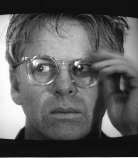
Burt Barr has had video installations at The Reina Sofia Museum, Madrid; Platform Museum, Istanbul; The Whitney Museum of American Art, NYC; Museum Boymans van Veuningen, Rotterdam; ZKM, Germany; The Philadelphia Museum of Art, Yale University Art Gallery, CAM at the University of South Florida, The Museum of Fine Arts Houston, and at PS1 Contemporary Art Center in Queens as well as MoMA for Elizabeth Murray’s memorial in 2008. He has also made several print-editions at Graphic Studio in Tampa, Florida. In conjunction with that facility, CAM at USF/Tampa have produced the video works, V-Formation (2004) and The Hawk (2006). Barr is the recipient of numerous grants, including six from the National Endowment for the Arts, three from the New York State Council on the Arts, The American Film Institute, The Andrea Frank Foundation, The Massachusetts Council on the Arts & Humanities, The John Simon Guggenheim Memorial Foundation, and The Foundation for Contemporary Art. In 2008, he was honored as a visiting artist at the Skowhegan School of Painting & Sculpture. Barr lives and works in New York City. He is represented by Sikkema Jenkins & Co., also of New York City.
Collaborated Repertory:
Deanna Berg MacLean
Costume Designer
Deanna Berg MacLean’s recent projects include: John Jasperse’s Truth, Revised Histories, Wishful Thinking, and Flat Out Lies (Eleanor and Erin final section), Alexei Ratmansky’s solo for Mikhail Baryshnikov, Valse Fantasie, and Karole Armitage's 3T's. She created the costumes for Sarah Michelson’s evening length Dogs at BAM, and the New York section of Michelson’s Dover Beach at the Kitchen. Her collaborations with Aszure Barton include: Lascilo Perdere (Aszure & Artists), & Lamentation Variations (Martha Graham Co). Her work with Luca Vegetti includes Maa and The Oresteia at the Miller Theatre. Deanna’s work in ballet and modern dance has appeared on the stages of Brooklyn Academy of Music, Jacob’s Pillow, Sadler’s Wells, Walker Arts Center, Edinburgh Festival, Festspielhaus Hellerau, Brockenheimer Depot, Romaeuropa Festival & The Venice Biennalle.
Spencer Brown
Lighting Designer
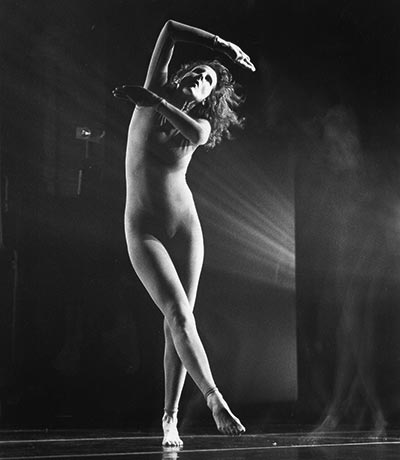
Spencer Brown spent 10 years touring with the Trisha Brown Company. During his tenure he designed many dances with Trisha, For M.G.: The Movie still being one of his favorite designs. He returned to Salt Lake City in 1998 and has been a “fixture” at The Hale Centre Theatre in West Valley City. He has also designed for the Red Hot 4th at Rice Eccles Olympic Stadium. Spencer has a BFA in Production Design from the University of Utah and an MFA in Lighting from the University of Massachusetts. While in New York, Spencer worked with other modern dance companies and Off Broadway Theatres. For the 2002 Winter Olympics Torch Night at Salt Lake City County Building, he co-designed the lighting which was broadcast to 150 countries. Spencer is now teaching lighting and stage management at Westminster College in Salt Lake City, while continuing to design for Hale Centre Theatre and The Salt Lake Grand Theatre. Spencer attributes his love for the theatre to his father, who instilled in him a great work ethic and sense of accomplishment. Spencer loves spending time with his family, preferably in the mountains of Utah where he can fish to his heart’s content, and looks forward to teaching his grandchildren the important skill of fishing. Photo of For M.G.: The Movie © 1991 Mark Hanauer.
Collaborated Repertory:
John Cage
Composer
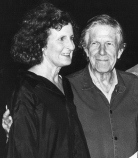
John Cage, in the opinion of many, the most influential American composer of the 20th century. Cage is perhaps best known for his 1952 composition 4'33', the three movements of which are performed without a single note being played. His major influences lay in various Eastern cultures. Through his studies of Indian philosophy and Zen Buddhism in the late 1940s, Cage came to the idea of chance-controlled music, which he started composing in 1951. The I Ching, an ancient Chinese classic text on changing events, became Cage's standard composition tool for the rest of his life. In a 1957 lecture, he described music as "a purposeless play" which is "an affirmation of life - not an attempt to bring order out of chaos nor to suggest improvements in creation, but simply a way of waking up to the very life we're living". Photo of Trisha Brown and John Cage © National Gallery of Art.
Collaborated Repertory:
Elizabeth Cannon
Costume Designer

Elizabeth Cannon is a clothing designer based in New York City. She studied art at the Rhode Island School of Design where she received a BFA in Illustration. She originally wrote and illustrated children’s books working closely with Pantheon Books and the Gotham Book Mart where she had three solo shows. After a nine-month stay in Paris, she became interested in the world of couture & began designing and fabricating costumes and clothing. She has often collaborated with other artists, and her work has been included in and has been the subject of many gallery shows in New York City. She maintains a design studio where she creates clothing for a private clientele. She has been very privileged to work with Trisha Brown on numerous projects, including the operas Winterreise and Da Gelo a Gelo.
Collaborated Repertory:
Vija Celmins
Set Designer
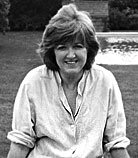
Vija Celmins was born in Riga in 1938, immigrated to the US with her family in 1949, and in 1965 received a degree in Art from UCLA. Her first exhibition of hyper-realistic paintings of large-scale daily objects was shown in 1965 followed by a series of paintings executed in grey made from photographs. Photography became central to her research. From 1966 to 1972, she taught painting and drawing at the University of California of Irvine and Yale and in 1969, she turned to more abstract painting and adopted a new technique with graphite pen on paper, drawing the illusion of the work by knot-works of individual lines. She produced a series representing the surface of the moon, the sea, the desert, or the constellations. Her work is regularly shown in the United States and abroad (in Paris, at the Centre George Pompidou, 2006). Her works of art are represented in several public collections and have appeared in numerous publications. Vija Celmins lives and works in New York.
Collaborated Repertory:
William Christie
Conductor
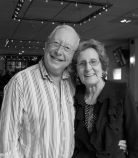
William Christie, harpsichordist, conductor, musicologist and teacher, is the inspiration behind one of the most exciting musical adventures of the last thirty years. His pioneering work has led to a renewed appreciation of Baroque music in France, notably of the 17th and 18th century French repertoire, which he has introduced to a very wide audience. Born in Buffalo (New York State), William Christie studied at Harvard and Yale Universities, and has lived in France since 1971. The turning point in his career came in 1979 when he founded Les Arts Florissants. As Director of this vocal and instrumental ensemble, Christie soon made his mark as a musician and man of the theatre, in both the concert hall and the opera house, with new interpretations of largely neglected or forgotten repertoire. Major public recognition came in 1987 with the production of Lully’s Atys at the Opéra Comique in Paris, which then went on to tour internationally with much success. Photo of William Christie and Trisha Brown © 2010 Carrie J. Brown.
Collaborated Repertory:
Alvin Curran
Composer
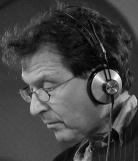
Alvin Curran has realized a long and fruitful career as a composer/performer/ installation artist, writer and teacher in the American experimental music tradition. Born in Providence in 1938 he studied with Ron Nelson, Elliott Carter and Mel Powell, co-founded the group Musica Elettronica Viva in 1966 in Rome where he currently resides. His music whether chamber works, radio-art, large-scale environmental theater or solo performance, embraces all sounds, all spaces and all people. Photo © Claudio Casanova 2002.
www.alvincurran.com
Collaborated Repertory:
Christophe de Menil
Costume Designer
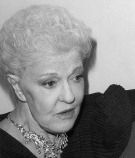
Designer Christophe de Menil was born in France, and raised in Houston amidst the legendary collection of her parents, John and Dominique de Menil. At a young age Miss de Menil became well known for wearing the work of renowned designers, including fashion icon Madame Gres. Since her teens, Miss de Menil has also been a steady friend and patron of contemporary artists, architects and designers, including Matisse, Le Corbusier, Barnett Newman, de Kooning, Rauschenberg, Mark Rothko, Mark di Suvero, Philip Johnson, Louis Kahn, Luis Barragán, Tadao Ando, among many, many others. Inspired by these outstanding people, Miss de Menil established herself as a notable costume designer, producing work for Trisha Brown, Lucinda Childs, and Robert Wilson. While collaborating with Wilson she also created jewelry with the extraordinary Claude Lalanne. Miss de Menil’s designs are a distillation of these remarkable collaborations and friendships, and her jewelry and clothing design hold the echoes of an immersion in the great theater costume departments of Europe: Munich’s Kammerspiele, Rotterdam’s National Theater, the Chatelet in Paris, Amsterdam’s Opera House, Rome’s Teatro dell’ Opera, Sicily’s Summer Festival in Gibellina.
Collaborated Repertory:
Barry Doss
Costume Designer
Barry Doss received a BA in theatre with a minor in fashion design from TCU. He was resident costume designer for Dance Kaleidoscope and performed in a European tour of HAIR. Since moving to NYC, he has worked in costume shops, for TV pilots, independent films and Broadway shows. Some notable wardrobe jobs include Phantom of the Opera, 1776, Finian's Rainbow, Jane Eyre the Musical, Chinglish, The Scottsboro Boys, Putting It Together, The Vertical Hour, Three Days of Rain and Wicked. He has been an associate costume designer on Broadway earning his union membership with United Scenic Artists Local 829 on such shows as The Seafarer, Hamlet, La Bete, RED, Exit the King and Evita. He recently returned home to Texas to design Steel Magnolias at Stephen F. Austin University. After returning to NYC, he co-designed Foreverman the Musical for the NY Musical Theatre Festival.
Collaborated Repertory:
Marc Downie
Set Designer
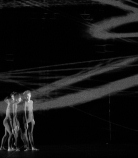
Photo of how long does the subject linger on the edge of the volume... © Nan Melville.
Collaborated Repertory:
Dave Douglas
Composer
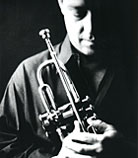
At the First Annual New York Jazz Awards, the Jazz Journalist’s Association chose Dave Douglas as Best Trumpeter of 1998, and the 1998 Downbeat critics’ poll chose him as Jazz Artist of the Year in its “talent deserving wider recognition” category. In 1996 he was named New Musician of the Year by the Italian jazz critics’ society. Douglas’ recordings have been named among the best of the year in ’94, ’95, ’96, and ’97 by publications such as the New York Times, Jazziz, Jazz Times, and the Village Voice.
Douglas has received fellowships for his work from the National Endowment for the Arts, Meet the Composer, the Mary Flagler Cary Charitable Trust, and more recently, Arts International, which helped finance a trip to India by his new Hindu-influenced group, Satya. In February 1996 Douglas toured as a guest with the Clusone Trio (Michael Moore, Ernst Reijseger, and Han Bennink), one of Holland’s most exciting improvisation ensembles.
Douglas’s diversity of influences are reflected in the music he writes for his own ensembles: Charms of the Night Sky, the Tiny Bell Trio, the Dave Douglas String Group, a jazz Quartet and Sextet, the electric octet Sanctuary, as well as more recent projects exploring the meeting points of improvisation and Indian music, Musique Concrete, and orchestral music. Douglas also performs as a member of John Zorn’s Masada, and Myra Melford’s The Same River Twice, and has recorded with Don Byron, Fred Hersch, Anthony Braxton, Han Bennink, Tim Berne, Uri Caine, Cibo Matto, Sean Lennon, Mark Dresser, Suzanne Vega, Ed Thigpen, and Vincent Herring.
Collaborated Repertory:
Beverly Emmons
Lighting Designer
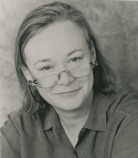
Beverly Emmons has designed for Broadway, Off Broadway and Regional Theater, Dance and Opera both in the USA and abroad. Her Broadway credits include, Annie Get Your Gun, Jekyll & Hyde, The Heiress, Chronicle of a Death Foretold, Stephen Sondheim’s Passion, Abe Lincoln in Illinois, High Rollers, Stepping Out, The Elephant Man, A Day In Hollywood A Night in the Ukraine, The Dresser, Piaf and Doonesbury. Her lighting of Amadeus won a Tony award. Off Broadway, she lit Vagina Monologues and has designed many productions with Joseph Chaikin and Meredith Monk. For Robert Wilson, she has designed lighting for productions spanning 13 years; most notably in America, Einstein on the Beach and the Civil Wars Pt V. Ms Emmons’ designs for dance have included works for Trisha Brown, Martha Graham and Merce Cunningham. She has been awarded seven Tony nominations, the 1976 Lumen award, 1984 and 1986 Bessies, and a 1980 Obie for Distinguished Lighting, and several Maharam/American Theater Wing Design Awards.
Shelley Eshkar
Set Designer
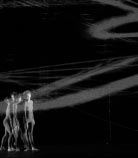
Photo of how long does the subject linger on the edge of the volume... © Nan Melville
Collaborated Repertory:
Simone Forti
Choreographer / Sound Composer
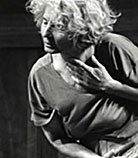
Simone Forti came of age in the 1950s and 60s and developed out of two main influences: dance improvisation which she studied with Anna Halprin, and the legendary Judson Dance Theater that revolutionized modern dance in New York at a historical moment of dialogue between artists, musicians, poets and dancers. From her early minimalist dance-constructions, through her animal movement studies, land portraits and news animations, Forti has had a seminal influence on her field. For the past two decades she has been developing "Logomotion," an improvisational dance/narrative form. Forti's book "Handbook in Motion" was published in 1974 by the Press of the Nova Scotia College of Art and Design and her book, "Oh, Tongue," was published in 2003 by Beyond Baroque Books. An article of hers is featured in "Taken by Surprise, A Dance Improvisation Reader," published in 2003 by the Wesleyan University Press. Forti has received various grants including six National Endowment for the Arts fellowships. In 1995 she received the Dance Theater Workshop’s New York Dance and Performance Award (Bessie) for sustained achievement, and in 2004 she received the Lester Horton Lifetime Achievement Award presented by the Dance Recourse Center of Los Angeles. She is a recipient of a 2006 Guggenheim Fellowship.
Collaborated Repertory:
Nancy Graves
Visual Artist / Set & Costume Designer
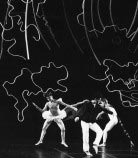
Photo of Lateral Pass © 1985 Babette Mangolte
Collaborated Repertory:
Irie
Costume Designer
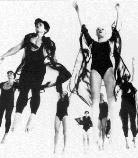
Photo of M.O. © Chris Callis
Collaborated Repertory:
Daniel Jenneteau
Set Designer
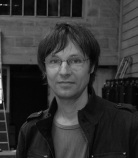
Daniel Jeanneteau was born in 1963 in Moselle, France. He studied at the School of Decorative Arts in Strasbourg and then at the school of National Theatre of Strasbourg. He has directed and designed the stage sets of Iphigenia by Jean Racine (2001); The Ghost Sonata by August Strindberg (2003); Blasted by Sarah Kane (2005); Into The Little Hill, an opera by George Benjamin and Martin Crimp at the Opera Bastille (2006); Adam and Eva by Mikhail Bulgakov (2007); Bulbus by Anja Hilling (2011). He directed in collaboration with Marie-Christine Soma Les Assassins de la charbonnière by Kafka and Labiche (2008 - 2010); Feux by August Stramm, created in 2008 at the Avignon Festival; Scissors, paper, stone by Daniel Keene (2010). As set designer, he designed all the stage sets for Claude Regy from 1989 to 2003. He also designed the stage sets for Catherine Diverres, Gerard Desarthe, Eric Lacascade, Jean-Claude Gallotta, Alain Ollivier, Marcel Bozonnet, Nicolas Leriche, Jean-Baptiste Sastre, Trisha Brown, Jean-François Sivadier, and Pascal Rambert. Associate Artist at the Théâtre Gérard Philipe of Saint-Denis from 2002 to 2007, at the Espace Malraux from 2006 to 2007, at the Maison de la Culture d’Amiens from 2007, at the National Theatre of La Colline in Paris from 2009 to 2011. Winner of the Villa Kujoyama in Kyoto in 1998, Winner of the Villa Medicis Hors les Murs in Japan in 2002, Grand Prize of the Union of Criticism in 2000 and 2004. Since January 2008 he has served as director of the Studio-Théâtre de Vitry.
Collaborated Repertory:
Enrico Job
Set Designer
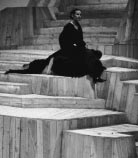
Photo of Carmen © Luciano Romano
Collaborated Repertory:
Donald Judd
Visual Artist / Set & Costume Designer
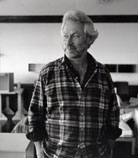
Donald Judd revolutionized practices and attitudes surrounding art making and the exhibition of art, primarily advocating for the permanent installation of works by artists in carefully selected environments. Judd achieved this goal for his own work and that of his colleagues at both his studio and residence at 101 Spring Street in New York and in various locations in and around Marfa, Texas. Judd served in the United States Army, then attended The College of William and Mary, Williamsburg, Virginia; the Art Students League, New York; and Columbia University, New York, where he received a B.S. in Philosophy, cum laude, in 1953. Judd’s first solo exhibition was in 1957 at the Panoras Gallery, New York, the same year he began graduate studies at Columbia University. Judd worked as a critic for ARTnews, Arts Magazine, and Art International and exhibited regularly and widely at galleries in New York as well as across the U.S., Europe, and Japan. Judd moved to Marfa, Texas, in 1972, where he would live and work until his death on February 12, 1994.
Collaborated Repertory:





















